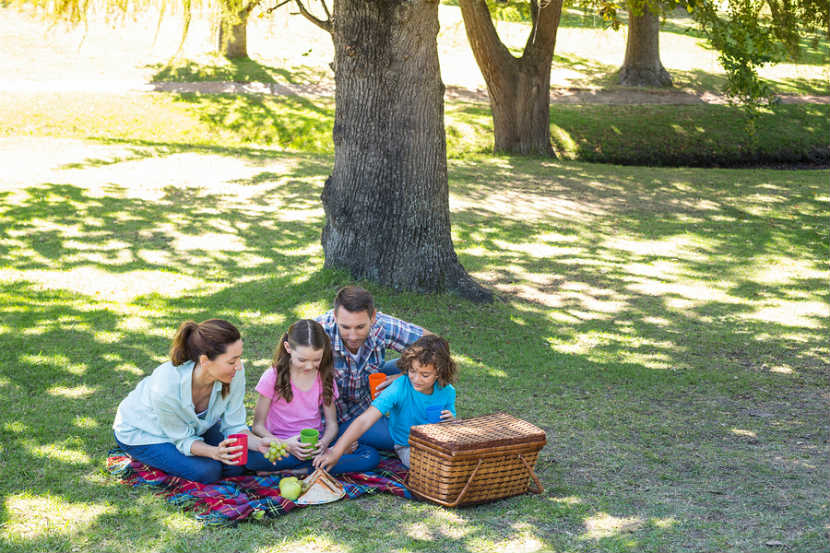
Eating outdoors is one of the great pleasures of summer! Don’t let food poisoning spoil a good time. Learn how to play it “food safe” at barbeques, picnics, camp sites and cottages.
Did you know?
There are 11 to 13 million cases of foodborne illnesses in Canada every year according to public health experts. Warmer summer temperatures and the challenges of preparing food outside can increase the risk of what’s commonly called food poisoning.
Four simple steps to keep food safe
Food safety experts agree - following these four simple rules can help keep food safe to eat:
1. Keep it clean
Always wash your hands, cooking surfaces and utensils well with soap and hot water before and after you handle food, especially raw meat, poultry or seafood, or raw vegetables and fruit. Use a mild bleach and water solution (5 ml of bleach per 750 ml of water) to sanitize countertops, cutting boards and utensils. Wash all produce (including vegetables, fruit and fresh herbs) under cool running water before eating or cooking.
Outdoor food safety tips:
-
Remember to bring soap and use a clean, safe source of water for washing.
-
Wash your hands for at least 20 seconds before and after handling food.
-
Pre-wash vegetables and fruit and store in clean containers before leaving home.
-
Wash and sanitize the inside of your cooler at home before and after each use.
2. Separate foods
Keep raw foods like meat, poultry, seafood and their juices, separate from other raw foods like vegetables and fruit during storage and preparation to prevent cross-contamination. Use different cutting boards for raw meats and other foods that you will not be cooking (like vegetables). Be sure to use clean plates and utensils for serving cooked foods and remember to keep foods covered.
Outdoor food safety tips:
-
Pack foods in leak-proof plastic bags or airtight containers to avoid cross-contamination in your cooler. Take a few extra along for storing any leftovers.
-
Package raw meats and poultry securely and place them at the bottom of your cooler to prevent juices from dripping onto other foods.
-
If you plan to cut foods on site, remember to pack separate cutting boards and knives for raw meats and vegetables, or prepare your food ahead of time at home.
-
Take enough plates and utensils to use a clean set for serving cooked foods.
3. Cook properly
Cook foods thoroughly to kill harmful bacteria. Don’t guess – check when meat and poultry are safe to eat by using a digital instant-read food thermometer. Eat cooked food while it’s still hot and don’t let foods sit in the “danger zone” where bacteria can grow quickly. The “danger zone” is any temperature between 4°C (40°F) and 60°C (140°F).
Safe temperatures for cooked foods
|
Ground beef
|
71°C (160°F)
|
|
Leftover food
|
74°C (165°F)
|
|
Whole poultry
|
85°C (185°F)
|
Outdoor food safety tips:
-
Remember that poultry and ground meats should always be cooked to well done (see the chart above).
-
Use a food thermometer - don’t depend on colour to tell if a food is properly cooked.
-
Place the food thermometer in the thickest part of the food for a correct reading.
-
Clean the thermometer before using it again if you need to check more than once.
4. Chill it well
Keep cold food cold, at or below 4°C (40°F). Use an insulated cooler with freezer packs or blocks of ice to store perishable foods (that are normally kept in the refrigerator). Or keep them in a refrigerator if you have access to one. Be sure to throw away any perishable foods that are left in your cooler once the freezer packs or ice have melted.
Outdoor food safety tips:
-
Refrigerate or freeze food the day before you pack it in your cooler if possible.
-
Keep your cooler in the coolest part of the car and place it in a shady spot out of direct sunlight.
-
Cover and store any leftover food in the cooler or refrigerator as soon as you have finished eating.
-
Throw away any food that has been left out in the “danger zone” for more than 2 hours.
A few words on safe water
If you’re heading out into the great outdoors, make sure you use safe water to drink, cook and wash with. Keep in mind that the water from lakes and rivers may not be safe even if it looks clean. To be sure, use bottled water, tap water from a clean, safe source or you can purify water to use on site.
To purify water, first remove any particles you can see in the water by letting them settle to the bottom or by straining them through a coffee filter. Then boil the water for at least one minute at a rolling boil. You may also use water purification tablets or water filters if you like.
Learn more:
Vegetables and fruit food safety facts
Understanding foodborne illness
Last Update – October 9, 2016